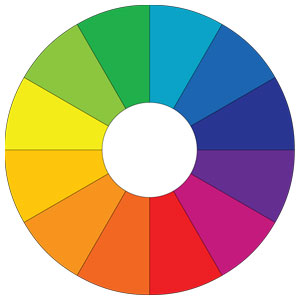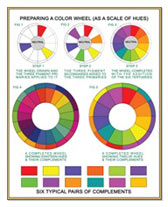The Color Wheel
Use the Color Wheel to understand how colors relate to one another and how to combine them in color schemes. Once understanding the basic principles of color theory, you will be able to create color schemes with confidence and achieve exactly the mood you want.
The Color Wheel - Mouseover the links
|
Primary Colors Secondary Colors Complimentary Colors Analogous Colors Triadic Colors Split-Complementary Colors Rectangle (tetradic) Colors Square (tetradic) Colors |
The Color Wheel shows how colors are related:
- Primary Colors - Red, yellow and blue are primary colors.
- Secondary Colors - Orange, green and purple are secondary colors made by combining two primary colors. All colors are made from some combination of white, black and primary colors.
- Related Colors - are those next to one another on the color wheel. Designers often build color schemes around two or three related colors.
- Complementary Colors - are located opposite each other on the color wheel. Blue, for example, is the complement of orange. Complementary colors enhance each other in decorating schemes.
- Neutral Colors - are shades of white, gray or beige. Most neutrals are tinted slightly with a warm or cool color. Neutral-colored walls provide a backdrop that does not compete with furnishings and accessories.
Testimonials
"Thank you for your advice.I sent you my room photos and you sent me samples of colors I could use and where to use them. It took the stress out of my decision making process and saved me time and money."
Janet M - Mississippi
"My rooms went from just okay to fabulous with the advice you gave me. Thank you."
Christien K - Maine
Contact us for a Color Consultation![]()
Large Color Wheel Chart

See Larger Image


